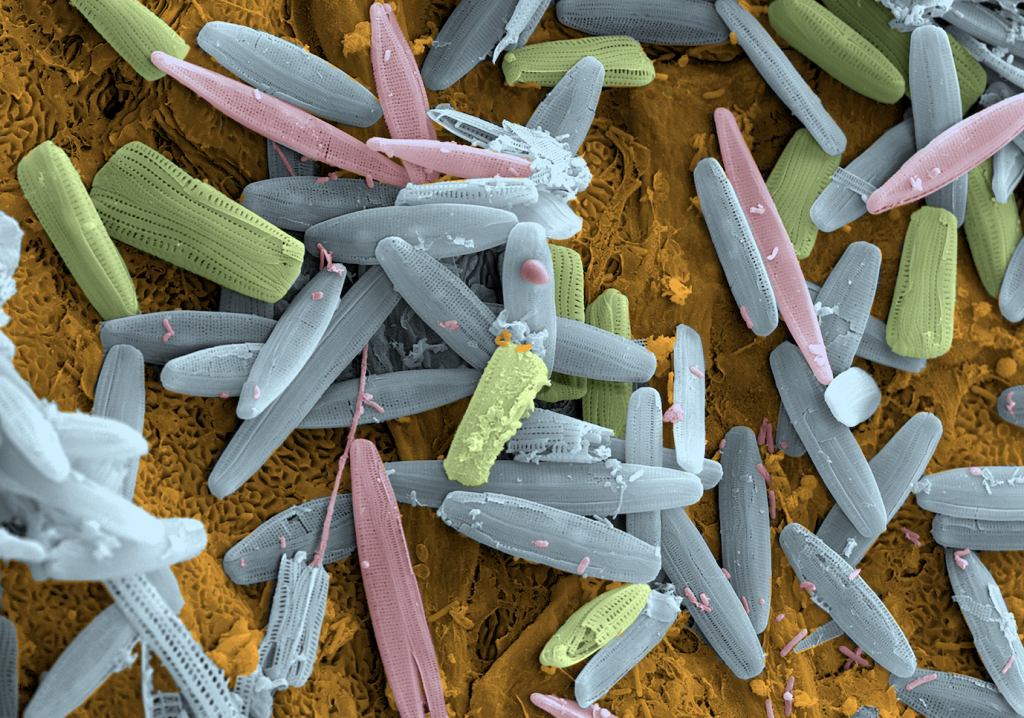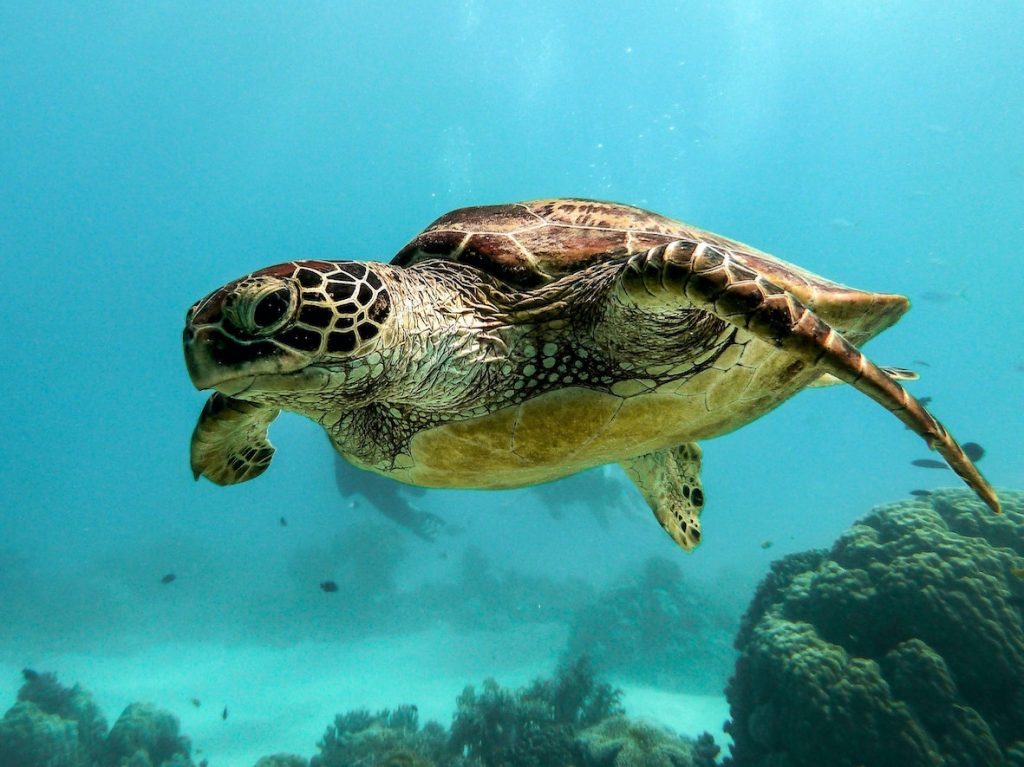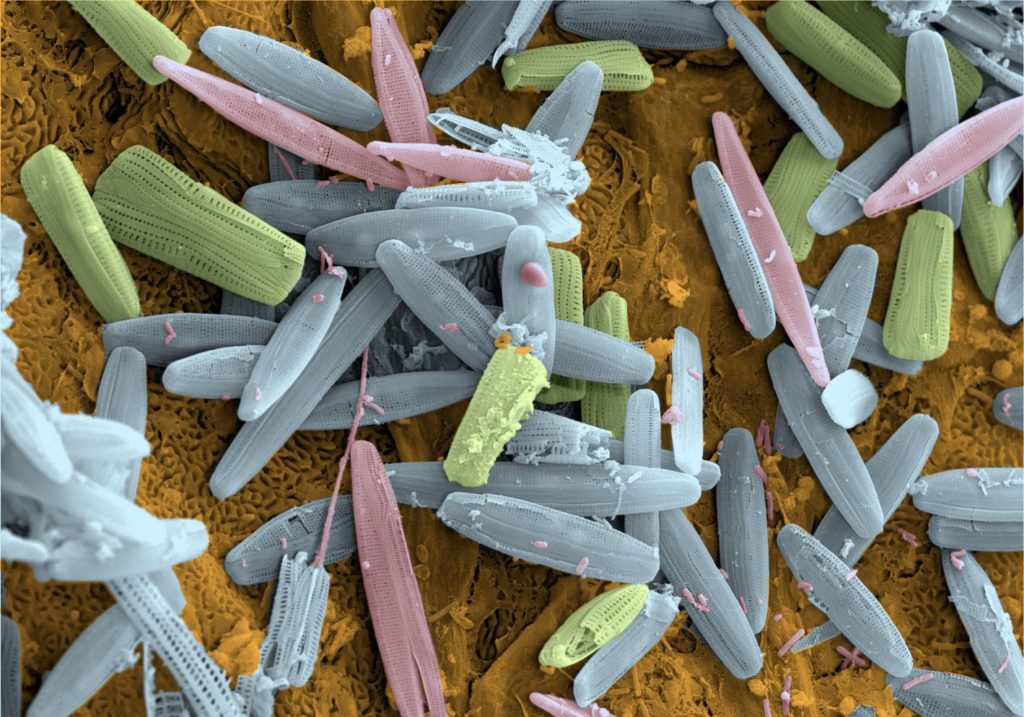By: Klara Filek | 14.09.2021.
As published at the International Microorganism Day blog [link]
What can we learn from microbial jungles carried by sea turtles?
You probably already know that microbes are present in and on humans and that they are helping us with digesting complex nutrients, and fighting off other microbes when necessary. The diverse abilities of microorganisms are exploited for food and medicine production (think of fermented foods and antibiotics), and scientists are also investigating the possibility of microorganisms to improve the health of their hosts through probiotics.
So, microbes are extremely important for us humans, but what about other animals on earth? What about the myriad of creatures having relationships with microbes which humans might have never seen before?
What have microbes got to do with (wild) animals?
The way we study microorganisms changed from mostly labor-intensive isolation and culturing to being able to describe microbial communities based solely on their DNA and/or RNA in an environment that interests us. The approach, based on analyzing microbial nucleic acids, enabled scientists to bypass “the great plate count anomaly”, which describes the difference between the number of microorganisms that we can observe in an original sample, and the number of microbes that we can cultivate. The “plate/culture-free” approach means scientists can gather knowledge about the 99% of microbes that cannot be cultured with the knowledge we have today.
Studying microbes with methods based on DNA and RNA analyses made it possible for more researchers to investigate the previously unseen microbial worlds associated with humans, animals, and plants. Most of the research focuses on human and mammalian microbial communities, however other hosts and environments are getting their fair share of research time as well!
Why should we investigate microbes of wild animals? As the earth is continuously burdened with human activities, wild habitats are disappearing, the environment is changing at great speeds, while scientists observe losses in biodiversity on a daily basis. The knowledge about microbial communities in the wild can add to preservation efforts already in motion, to keep the earth’s biosphere diverse and healthy in the present and the incoming future.
Sea turtle.
Image source: Photo by Giorgia Doglioni on Unsplash
Atlas would be proud of sea turtles
Luckily, the curiosity and enthusiasm of scientists brought us this far, and there are plenty of recent studies specifically on endangered wild animals and their microbes. One of the protagonists of such studies are the sea turtles: ancient (they appeared 110 million years ago) and large marine reptiles (the extinct Archelon was around 4 meters in length and 2 tonnes in weight). There are currently 7 species of sea turtles roaming the oceans, many of them endangered due to bycatch, diseases, and habitat disruption. Sea turtle rescue centers around the world work tirelessly on their protection, rescue, and recovery.
The sea turtles are not just ancient giants, but main characters in mythologies trying to explain how the world works. The legends of turtles carrying the world on their back go as far as Hindu, Chinese, and Native American mythologies (similar to Atlas holding the skies in Greek mythology). We can even find their motifs today, in modern culture, within the storylines designed for online games; in World of Warcraft there is an elusive Wandering Island that is actually a huge sea turtle providing a home for panda warriors.
Today we know that turtles do not hold the entire world on their backs. However, such myths are true in a microbial sense! Sea turtles are home to microbial jungles on their shells (along with some larger macro-organisms). The travelers on the turtle shells visible to the human eye are barnacles (Chelonibia testudinaria species grows only on sea turtles), seashells, red and green algae. But if we look closer (and with greater magnification) we will find bacteria, cyanobacteria, diatoms, and other microscopic hitch-hikers.
Loggerhead sea turtle at the Aquarium Pula rescue center.
Video source: Klara Filek
Who is out there? And what can they tell us?
Bacteria (most famous of all microorganisms) are the first to colonize any surfaces they can find in the sea including sea turtles! Marine bacteria (belonging to groups Proteobacteria and Bacteroidota) can be commonly found in marine biofilms, making the area welcoming for the next microbial hitch-hiker. Cyanobacteria (usually called blue-green algae) also inhabit sea turtles, using the sun as an energy source through photosynthesis. After the small and mighty have prepared the surfaces by excreting sticky extracellular complex sugars, other, larger microorganisms can start building their own colonies.
The following colonizers on sea turtles are often diatoms. Diatoms are eukaryotic microalgae that are known for their “glass houses” (frustules) made out of silica in an organic matrix. Diatom frustules have intricate patterns that are used for their identification. The great thing about diatoms is that even if the cells die, their frustules remain intact and can be detected and described even after the diatom cell is long gone. The perseverance of silicate frustules enables scientists to take a glimpse into the past, determining which diatoms were present in an environment even though there might be some other microorganisms currently inhabiting that area.

Colorized scanning electron microscopy image of the loggerhead sea turtle shell (colored orange) with diatoms (blue, green, and pink) and bacteria.
Image source: colorized by Klara Filek at Bosak lab
Diatoms on turtles not only stick to the turtle and build diverse micro-jungles on the turtle’s back, there are also many new species of diatoms being discovered. Some of these cannot be found anywhere else yet and might be specific to the sea turtle. Achnanthes elongata is one of the newly discovered turtle diatoms, and even though it was not found anywhere else yet, it seems to be happily growing in the laboratory once the cells are isolated and provided with nutrients. Why is A. elongata found on the sea turtles and nowhere else, even though it seems to grow without the turtle pretty well, remains a mystery (for now).
Research so far has shown that sea turtles are a source of many new species of microorganisms (mostly diatoms so far), but in addition to discovering new microorganisms, we also learned something new about the sea turtles themselves. Microbes living on sea turtles can differ depending on the geographical origin of the turtle, which means scientists might be able to tell where the turtle has been or how it behaved based on the microorganisms that travel with it.
Achnanthes elongata diatom cells in culture.
Image source: by Klara Filek in Bosak lab
What about other microbial jungles?
Sea turtles are just one group of animals that offer a peculiar habitat for microorganisms. If we investigate further into microbes associated with wild animals who knows what we can find. Today’s technology gives us the ability to prospect environments for microorganisms and their metabolites. Different ways microbes deal with problems in their microsphere (nutrient acquisition, competition, cooperation) might reveal solutions humans could implement for global issues in medicine, agriculture, and climate change.
On the other hand, we often hear about preventing the loss of biodiversity on earth, which mostly includes big and charismatic flora and fauna. But we tend to forget that biodiversity includes microorganisms of all shapes, sizes, and evolutionary histories, especially the ones we yet have to discover and admire!
By: Klara Filek | 18.10.2019.
Sea turtles – creatures both of myth and science
Turtles have had a long and complicated relationship with humans. From provoking feelings of awe and admiration to using their flesh and eggs as food or as a souvenir (the trade of which is banned today). Feelings of awe and admiration in people of ancient cultures made turtles the protagonists of many creation myths, or have put them in roles of protectors or wise companions. In science they are admired for their long evolutionary history, perseverance through extinction events, complex physiology and anatomy, and slow but sometimes miraculous recovery after injury or disease.
Today sea turtles are threatened mostly by human activities. They get caught in fishing nets, hit by boat propellers, and mistake plastic bags for food. Almost all sea turtle species are considered critically endangered or vulnerable, which is why there are great efforts all across the world to help in the recovery of injured individuals in turtle rescue centers and hospitals.
The Myths
The first myths of the cosmic turtle appeared in Hindu mythology (according to anthropologist Edward Burnett Tylor). Among all the Avatars of the almighty Hindu god Vishnu, there was one (called Kurma) which was the great turtle providing foundations for an ancient mountain. Kurma was always the one who brought balance during difficult times. In another Hindu myth, the cosmic turtle Akupāra carries elephants on its carapace, which hold the world.
Illustration of Hindu Earth from 1876, unknown author. (source)
In Chinese mythology, goddess Nüwa begged the great sea turtle Ao to help her save the world and mend the sky after a big catastrophe (two quarreling gods destroyed the world, as usual). Ao agreed to help, so Nüwa cut off Ao’s legs and used them to create the pillars that hold up the sky. A little bit further, across the Pacific, Native American people have their version of the turtle myths. Creation myths of the Lenape and Iroquois people describe a turtle that volunteered to rescue animals during the great flood. As the turtle grew, so did the world it carried which is why today we can hear North America sometimes called the Turtle Island by environmental activists.
Even in modern culture, turtles have similar roles. In a massively multiplayer online role-playing game (MMORPG) World of Warcraft, the Wandering Island is a great sea turtle, Shen-sin Zu, which carries the race of Pandaren across the seas to discover the world.
World of Warcraft in-game screenshot of The Wandering Isle. (source)
The Facts
Modern sea turtles have evolved 110 million years ago, separating themselves from all the other turtles. These ancient reptiles survived millions of years, including the Cretaceous-Paleogene extinction event that erased dinosaurs. Fossils of sea turtles’ ancestors have started the flames of scientific curiosity with the extinct Archelon being the most impressive and largest turtle ever documented.
The seas today are home to seven species of sea turtles, most of them endangered or vulnerable on the IUCN Red List (iucnredlist.org).
The largest of them all is the leatherback turtle (Dermochelys coriacea) which can grow up to 178 cm and 907 kg, its back covered with thin skin instead of a hard shell. This sea exploring giant feasts on jellyfish and dives with whales.
From the Caribbean Sea to the North Atlantic roams exquisitely rare and critically endangered Kemp’s Ridley turtle (Lepidochelys kempii). Almost all Kemp’s Ridley females return to the same beach, Rancho Nuevo on the coast of the Gulf of Mexico, to lay their eggs. The females arriving in large groups (nesting aggregations) from hundreds to thousands are called arribadas which is Spanish for “arrivals”.
Arribadas at Rancho Nuevo, Mexico by Toni Torres (source)
The most abundant sea turtle is the Olive Ridley turtle (Lepidochelys olivacea). Its habitat ranges over the Pacific, Atlantic, and Indian Oceans. As with Kemp’s Ridley, the Olive Ridley females also come in arribadas and nest on the shores of sandy beaches.
Plant eating green turtles (Chelonia mydas) got their name after the color of their fat. Pigments of green algae dissolve in the thin layer of fat found between the turtle’s organs and hard shell, making it look greenish in color.
Along the coral reefs we can find the strong-jawed and magically glowing hawksbill turtle (Eretmochelys imbricata). Recently, scientists have recorded the first biofluorescent hawksbill turtle, capturing it on film near the Solomon Islands (link).
The flatback turtle (Natator depressus) is the least known sea turtle since it lives in the tropical waters of Australia and nests on remote beaches, and it is the only with a flat rather than dome-shaped hard-shelled back.
Finally, the loggerhead sea turtle (Caretta caretta), once hunted for meat and eggs, is distributed all over the world’s oceans. It is known by its thick neck and strong enough jaw to bite through the biggest crab it can find.
Loggerhead sea turtle (Caretta caretta). (source)
The Science
Only recently have scientists started to look more closely into the actual worlds on the sea turtles’ backs. What we can see with our own eyes are barnacles, sponges, and macroalgae traveling around with their turtle host. But what we did not see until recently is the rich world of bacteria, diatoms and other microscopic beings on the turtles.
What is known today is that bacteria are omnipresent with effects of their activities extending all the way to the physiology and behavior of their host. Along with a plethora of bacteria are diatoms, as second in line to inhabit the surface of the turtle carapace. Diatoms are unicellular eukaryotes that rely on sunlight to produce energy and oxygen crucial for life on Earth. They are enclosed in silica frustules of various patterns and shapes. We are only starting to explore what is the composition of the turtles’ microworlds, what it means for the microbes to live on the turtle and what it means for the turtle to keep such small creatures company.
False colored SEM micrograph of the loggerhead sea turtle carapace covered in diatoms and bacteria (by Klara Filek – TurtleBIOME project.
As we plunge deep into the unknown, together with our deep-diving companions, we hope that when we come up for air, we will be smarter with greater knowledge about these ancient gentle giants.
References:
James R. Spotila “Sea turtles: a complete guide to their biology, behavior, and conservation.” Johns Hopkins University Press; 2004. 227 p.
Craig Welch “Sea turtles are surviving-despite us” National Geographic. October 2019. (accessed 18.10.2019.) <https://www.nationalgeographic.com/animals/2019/09/sea-turtles-are-surviving-despite-threats-from-humans-feature/>
Eric Grundhauser “Why Is the World Always of the Back of a Turtle?” Atlas Obscura. October 2017. (accessed 16.10.2019.) <https://www.atlasobscura.com/articles/world-turtle-cosmic-discworld>
David F. Gruber and John S. Sparks “First Observation of Fluorescence in Marine Turtles” American Museum Novitates. December 2015. (accessed 16.10.2019.) https://doi.org/10.1206/3845.1
Jane J. Lee “Exclusive Video: First “Glowing” Sea Turtle Found” National Geographic” September 2015. (Accessed 16.10.2019.) <https://www.nationalgeographic.com/news/2015/09/150928-sea-turtles-hawksbill-glowing-biofluorescence-coral-reef-ocean-animals-science/>
Mae Hamilton “Nüwa, Chinese Creator of Mankind” Mythopedia. (accessed 18.10.2019.) <https://mythopedia.com/chinese-mythology/gods/nuwa/>
“Turtle Island (North America)” Wikipedia. (accessed 18.10.2019.) <https://en.wikipedia.org/wiki/Turtle_Island_(North_America)>
“Shen-zin Su” Wowpedia. (accessed 18.10.2019.) <https://wow.gamepedia.com/Shen-zin_Su>





